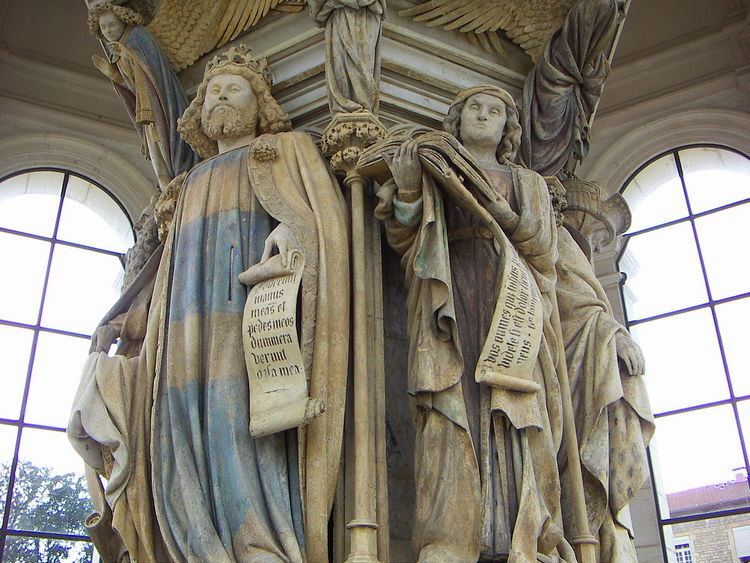Created 1403 | Phone +33 3 80 42 48 48 | |
 | ||
Address Centre Hospitalier Spécialisé La Chartreuse 1, boulevard du Chanoine Kir, 21000 Dijon, France Hours Open today · 9:30AM–12:30PM, 2–4:30PMMonday9:30AM–12:30PM, 2–4:30PMTuesday9:30AM–12:30PM, 2–4:30PMWednesday9:30AM–12:30PM, 2–4:30PMThursday9:30AM–12:30PM, 2–4:30PMFriday9:30AM–12:30PM, 2–4:30PMSaturday9:30AM–12:30PM, 2–4:30PMSunday9:30AM–12:30PM, 2–4:30PMSuggest an edit Similar Champmol, Musée des Beaux‑Arts de Dijon, Palace of the Dukes of Burgun, Dijon Cathedral, Church of Notre‑Dame of Dijon | ||
Sluter well of moses
The Well of Moses (French: Puits de Moïse) is a monumental sculpture recognised as the masterpiece of the Dutch artist Claus Sluter (1340-1405/6). It was executed by Sluter and his workshop in 1395–1403 for the Carthusian monastery of Chartreuse de Champmol built as a burial site by the Burgundian Duke Philip the Bold just outside the Burgundian capital of Dijon, now in France.
Contents
Well of moses
Creation
The work was executed for Philip’s son, John the Fearless (1371–1419), in a style combining the elegance of International Gothic with a northern realism, but with a monumental quality unusual in either. It was carved from stone quarried in Asnières, near Dijon, and consisted of a large crucifixion scene or "Calvary", with a tall slender cross surmounting a hexagonal base which was surrounded by the figures of the six prophets who had foreseen the death of Christ on the Cross (Moses, David, Jeremiah, Zachariah, Daniel and Isaiah). Standing on slender colonnettes on the corners between these prophets are six weeping angels. All the figures, including the lost Calvary group, were painted and gilded by Jean Malouel, and some of this paint remains. Thanks to the survival of the ducal accounts, the commission and ongoing work is unusually well documented. It was traditionally assumed that the Calvary scene would have included the Virgin Mary, Mary Magdalen, and St. John, though recent research (based on a close reading of the archives and an examination of the fixing-points on top of the base) suggests that there was only one figure, the Magdalen, embracing the foot of the Cross.
Conservation
Situated in the central courtyard of what was then the main cloister, the building enclosing the well was added in the 17th century, when the upper parts of the work were already suffering from weather damage. The work was further damaged in 1791, during the French Revolution. The name of "Well of Moses" (Puits de Moïse in French) appears during the 19th century.
Only fragments of the Crucifixion survive, including the head and torso of Christ; they are now housed in the Musée Archéologique in Dijon. The hexagonal base with its sculptures remains in what is now the Hospital de la Chartreuse, and can be seen by tourists.
